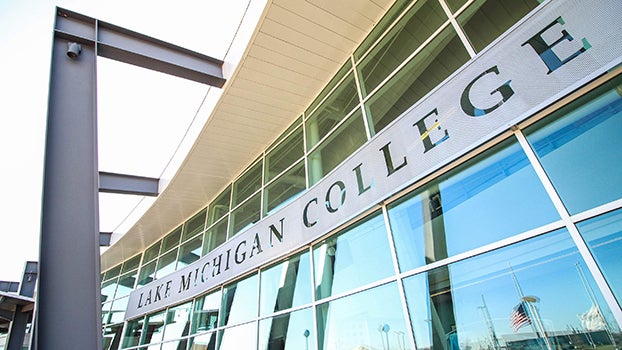How a famous Cass County journalist’s work is remembered
Published 8:55 am Monday, July 9, 2018
Webb Miller will forever be remembered by historians for his work in India as the only western journalist to cover the salt marches, which took place at the height of Gandhi’s peaceful uprising against the British Empire. But while that may be his career highlight, it is far from his only renowned accomplishment.
He was hired by the United Press after his freelancing exhibition on the Mexico and U.S. border. The news company sent him to Europe in 1917 to cover the first World War.
World War I, II and inbetween
Miller was stationed in London, where he witnessed many air raids on the city. His reporting of them earned him acclaim and he was quickly bureau chief of London by the United Press. He covered many battles on the British-American front through the armistice of the war.
When Miller learned that a cease-fire was on the horizon, he convinced a pilot to fly him above the battlefield so that he could watch the retreat. He knew that this would give him a unique vantage point to an event the entire world was waiting to learn about.
“He’s the only journalist there to witness the German retreat from an airplane,” Steve Arseneau, the director of the Dowagiac Area History Museum.
Next he covered the Paris Peace Conference and the Easter Rising in Ireland. After a few years, he was promoted to Paris bureau chief and eventually European bureau chief for the United Press.
In the 1920s, he was nominated for two Pulitzer Prizes, one for his coverage of Henri Désiré’s death by guillotine, and the other for reporting on the World War I armistice. His runner-up certificate for one of those Pulitzer Prizes is on display in the Dowagiac Area History Museum.
He later covered Italy’s invasion of Ethiopia, the Spanish Civil War and the Munich Conference, where he interviewed Adolf Hitler and Benito Mussolini.
“You can follow world history by following Webb Miller’s footprints from 1915 until he died in 1940,” Arseneau said.
End of a legacy
On May 7, 1940, Miller was on his way to his London residence after work when he fell off the train platform, hitting his head and soon after passed away. This is how a man who travelled the world and had witnessed many of the greatest battles of his generation died.
His death was deemed an accident, but many of his family members believe that foul play was involved.
“His death to me and all of my family remains a mystery,” said Margaret Cousins, Miller’s niece. “I don’t think he stepped off the train, not knowing where he was. We do think that it was intentional.”
Over the course of Miller’s life he reported on controversial topics, and broke news that many world powers may have wanted to keep quiet. This include the British government, Mussolini and others.
“He had interviewed Hitler right before he died,” Cousins said. “And they never did find the briefcase he had with him.”
Today, Miller is buried in Dowagiac, not far from the Dowagiac Area History Museum at Dewey Cemetery.
His memory lives on
Today, most of Miller’s belongings lie in an exhibit at the Dowagiac Area History Museum. Cousins donated them there after Miller’s son Kenneth died more than a decade ago.
“We’ve got this amazing collection of his story — passports, press passes, photographs. Personal effects,” Arseneau said. “Now we’re try to spread the word about Webb Miller.”
Arseneau hopes that this exhibit, along with programs and lectures on Miller, will help revive the once famed journalist’s legacy, which he says is relatively unknown among people in southwest Michigan — even in Dowagiac.
“I’ve been here for 20 years now and for my first 10 years I didn’t really even know the Webb Miller story,” he said. “It just really isn’t out there. When I had Scott Topping do a program for me out at the college, when the museum was out there. It was in 2007 and as a result of that him doing our program.”
One reason Miller may not be as remember as much as he should be is because he died at the very beginning of World War II, while other journalists like Ernie Pyle really made their careers and legacies while covering it.
Then there is a piece of pop culture that could have immortalized Miller’s coverage of the Salt Marches and his relationship with Gandhi, but his family prevented that from happening.
In the 1982 film Gandhi, a character in the movie named Vince Walker is a western journalist following Gandhi and his protesting of British rule. This character, played by Martin Sheen, is based off of Miller.
“They would have used his name, but his wife wouldn’t allow it,” Cousins said.
The movie ended up winning eight Academy Awards, including best picture, director, actor and screenplay.
Cousins, who now owns the rights to Miller’s memoir “I Found No Peace” said she would be happy to cooperate with anyone who would like to use his story in a film today.
“You know, I’ve had several different people contact me about making a movie,” she said. “Nobody’s ever taken it any further. Boy oh boy, if you ever take the time to read his book you will see it would make quite a movie.”
Until that happens, his book and the Webb Miller exhibit at the Dowagiac Area Museum are the best way for people in southwest Michigan to learn about him.







